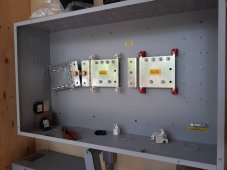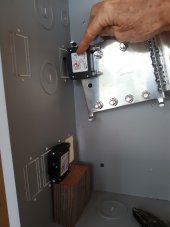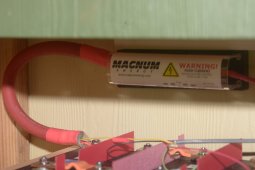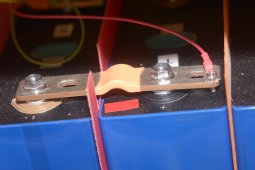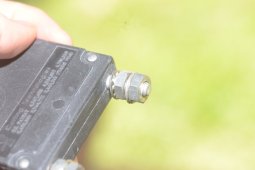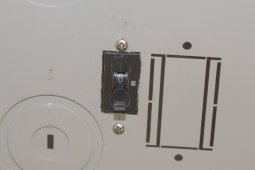TorC
Solar Enthusiast
- Joined
- Jan 13, 2022
- Messages
- 514
I have a Midnite BCB-1000 that I plan to put 4 Outback FM-80s, 4 DIY LFP 16S strings, and 3, perhaps in the future 4, inverter outputs (Radian 8048 & 4048).
Physically, SCCs are above the box, batteries to lower left in the next cabinet, and inverters are below.
My plan had been, given the way the 12 breaker slots are set and my configuration, to put the batteries on the lower left, inverters on lower right, and SCCs on the four uppers, two each side. This covers the entirety of available slots.
I got it with the extra busbar so I can have the shunt available (or maybe I should skip it with the JKBMS, and just rely on them?). When I go to install the busbar, I find that it runs very close to the edge, and blocks one of my breaker slots.
The place I got them from has been minimally responsive to the question. I think that's more they're overloaded entirely, as they weren't much more responsive regarding shipping quotes for the order, so I can't be too hard on them for it.
Anyone have ideas on how best to arrange my box?
Physically, SCCs are above the box, batteries to lower left in the next cabinet, and inverters are below.
My plan had been, given the way the 12 breaker slots are set and my configuration, to put the batteries on the lower left, inverters on lower right, and SCCs on the four uppers, two each side. This covers the entirety of available slots.
I got it with the extra busbar so I can have the shunt available (or maybe I should skip it with the JKBMS, and just rely on them?). When I go to install the busbar, I find that it runs very close to the edge, and blocks one of my breaker slots.
The place I got them from has been minimally responsive to the question. I think that's more they're overloaded entirely, as they weren't much more responsive regarding shipping quotes for the order, so I can't be too hard on them for it.
Anyone have ideas on how best to arrange my box?
Attachments
Last edited:



